There are plenty of people who love to travel. To help fund their hobby, the smart ones either become travel agents (true story: years ago, Joe thought about becoming a TA, just for the bennies. I even bought a book on how to do it) or start churning credit cards and collect frequent flyer miles, hotel points, and, let’s face it, status.
Some people take to plane spotting as an extension of the travel hobby.
I think I’ve told you about our friend Tim. Tim and his wife Beth live in Texas, but we were all big Disney fans at one time (they still are. Us, not so much), and we’d hang out when they’d come to Florida. Tim would be able to see a plane, know what airline it was from (OK, that’s pretty obvious, from the livery) if it was an Airbus or Boeing or the occasional something else, and usually what model of plane it was.
I was in awe.
At the time (more than a decade before COVID-19), Tim traveled a lot for work, so he slowly got to learn all the airlines and planes. But people who love aviation don’t even have to travel much to learn what’s out there; there are plenty of places where planes take off and land, especially in larger cities. And, of course, the internet has all the information for these people who like to call themselves plane spotters.
What is plane spotting?
Plane spotting (or planespotting, as a compound word), is a hobby of observing and tracking aircraft, usually accomplished by photography or videography. Besides monitoring aircraft, planespotting enthusiasts also record information regarding airports, air traffic control communications, airline routes, and more. (thanks, Wikipedia!)
Some plane spotters photograph the planes they see. Others learn as much as possible about planes, airlines, liveries, routes, air traffic control, airports, etc.
Tools to start plane spotting
Several websites can help you in your quest to be a better plane spotter. These will give you a good, solid start:
Spotterguide.net
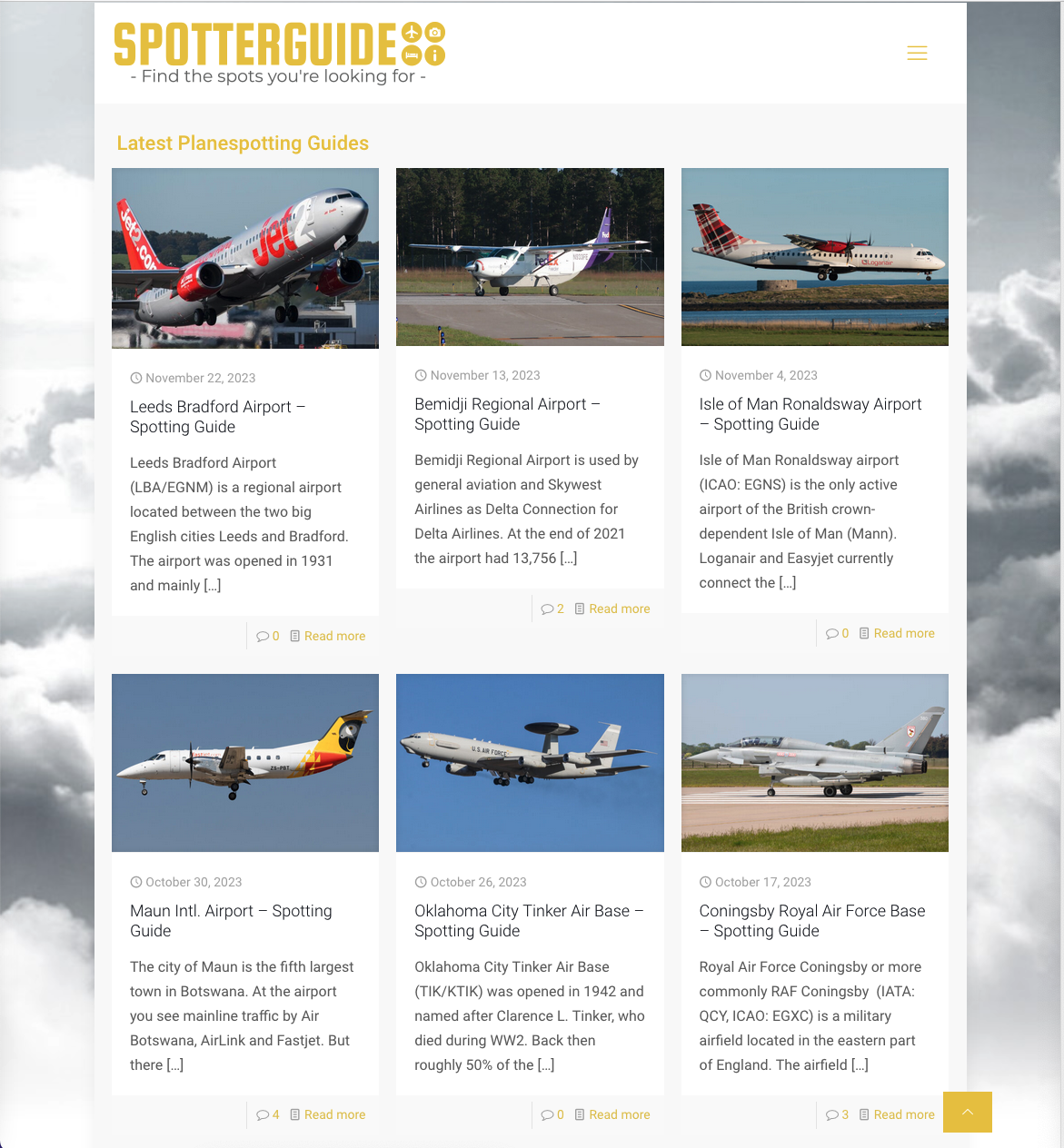 Spottersguide.net is an excellent tool, with information about (as of this writing) 635 airports in 97 countries on 6 continents. The website is useful to help you learn the best place to go to plane spotting, wherever you are. After you key in what area you’d like to plane spotting, the website will pull up:
Spottersguide.net is an excellent tool, with information about (as of this writing) 635 airports in 97 countries on 6 continents. The website is useful to help you learn the best place to go to plane spotting, wherever you are. After you key in what area you’d like to plane spotting, the website will pull up:
- History of the airport
- Rating system for background info that might affect what you see (i.e., movements, airline variety, photo location, weather)
- Airport information (i.e., runway and terminal info)
- Spotting information
- Info about the airport’s runways and how they’re used at the airport (i.e., which runway(s) get(s) used for what type of aircraft, arrivals vs departures, etc.)
- A map of the airport
- Where and when to find the best plane spotter areas
flightradar24.com
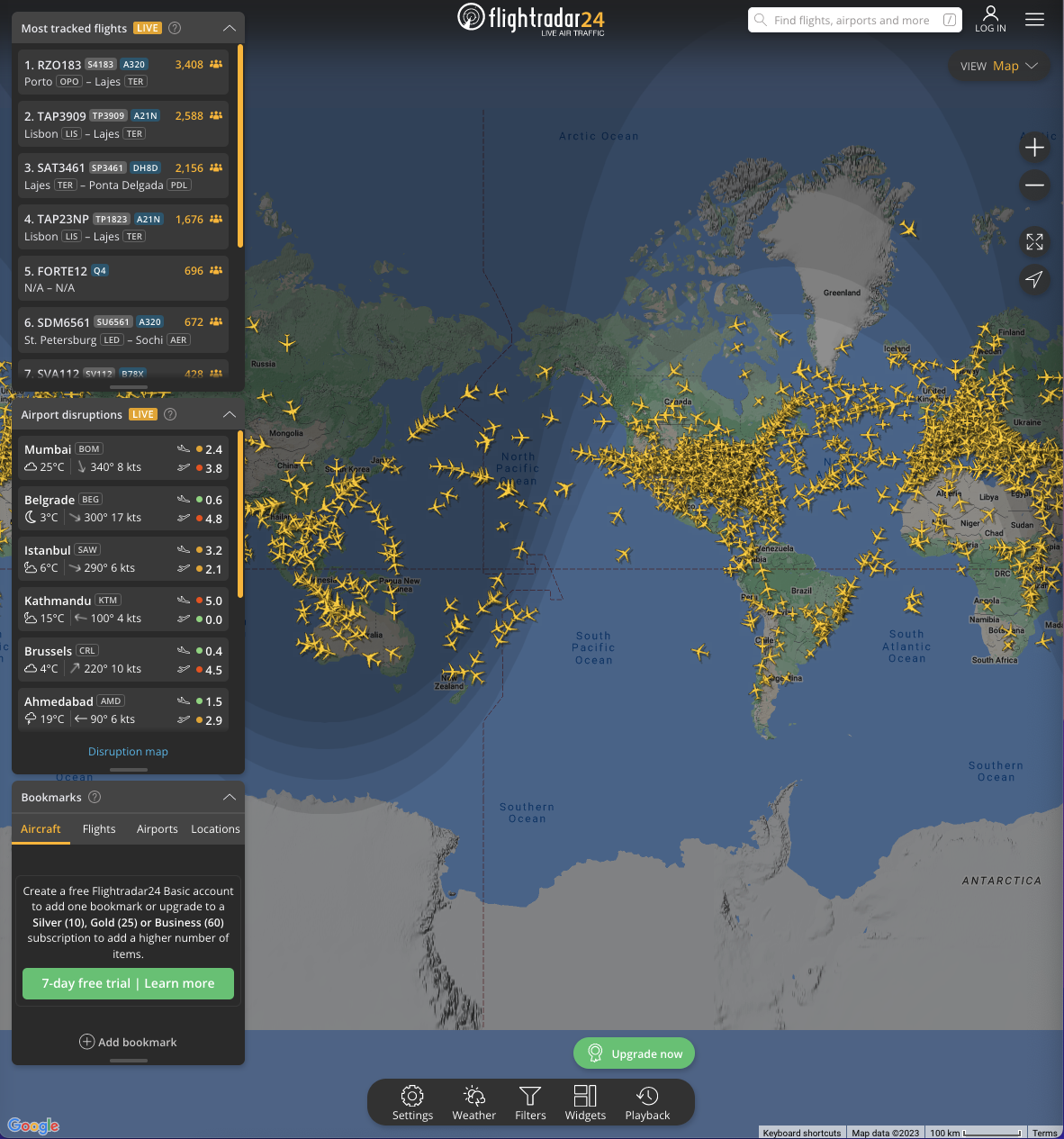 Flightradar24 is a Swedish internet-based service that shows real-time aircraft flight tracking information on a map. It includes flight tracking information, origins and destinations, flight numbers, aircraft types, positions, altitudes, headings and speeds. (thanks, Wikipedia!)
Flightradar24 is a Swedish internet-based service that shows real-time aircraft flight tracking information on a map. It includes flight tracking information, origins and destinations, flight numbers, aircraft types, positions, altitudes, headings and speeds. (thanks, Wikipedia!)
The site is available online and as an app. The latter is particularly helpful if you’re looking for planes in the field (although I love using it to see what’s flying over my house at any given moment LOL).
flightaware.com
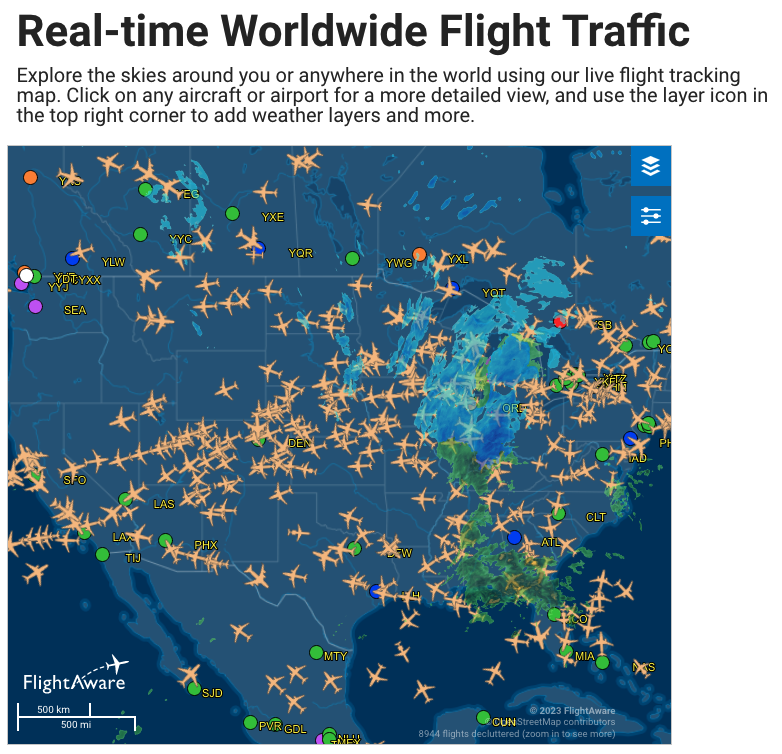 Another flight tracking program that’s available online or as an app, flightaware.com offers live tracking maps, flight status, and airport delays for airline flights, private/GA flights, and airports.
Another flight tracking program that’s available online or as an app, flightaware.com offers live tracking maps, flight status, and airport delays for airline flights, private/GA flights, and airports.
It’s a good tool to search for specific airports (by name or 3-letter code) to know what flights will arrive and depart anytime.
LiveATC.net
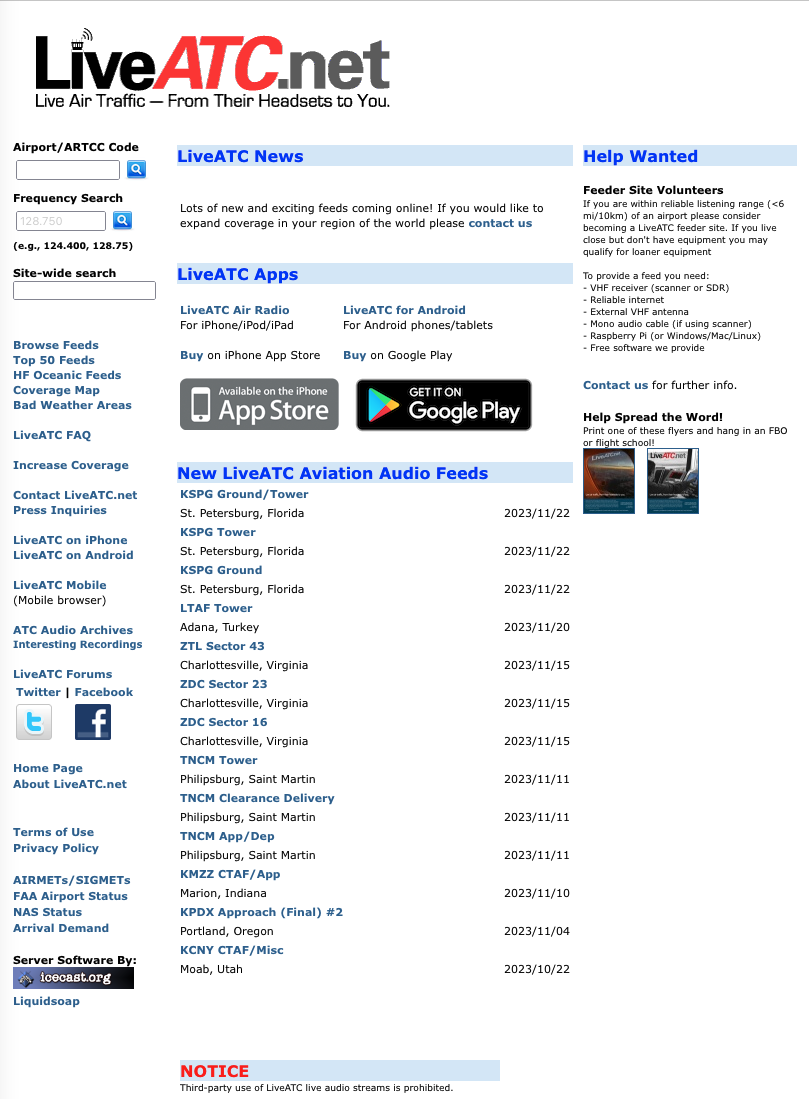 LiveATC.net allows you to listen to live air traffic control (ATC) broadcasts from ATC towers and radar facilities from around the world. Although available on the ‘net, the app will be more useful when you’re out in the field.
LiveATC.net allows you to listen to live air traffic control (ATC) broadcasts from ATC towers and radar facilities from around the world. Although available on the ‘net, the app will be more useful when you’re out in the field.
Many plane spotters not only like to see planes but also like to take photos of them. There’s a whole world of cameras, zoom lenses, etc. regarding that. Unfortunately, I’m not your person for that; it’s not my thing. But others have given some good hints.
SpottingLog.com
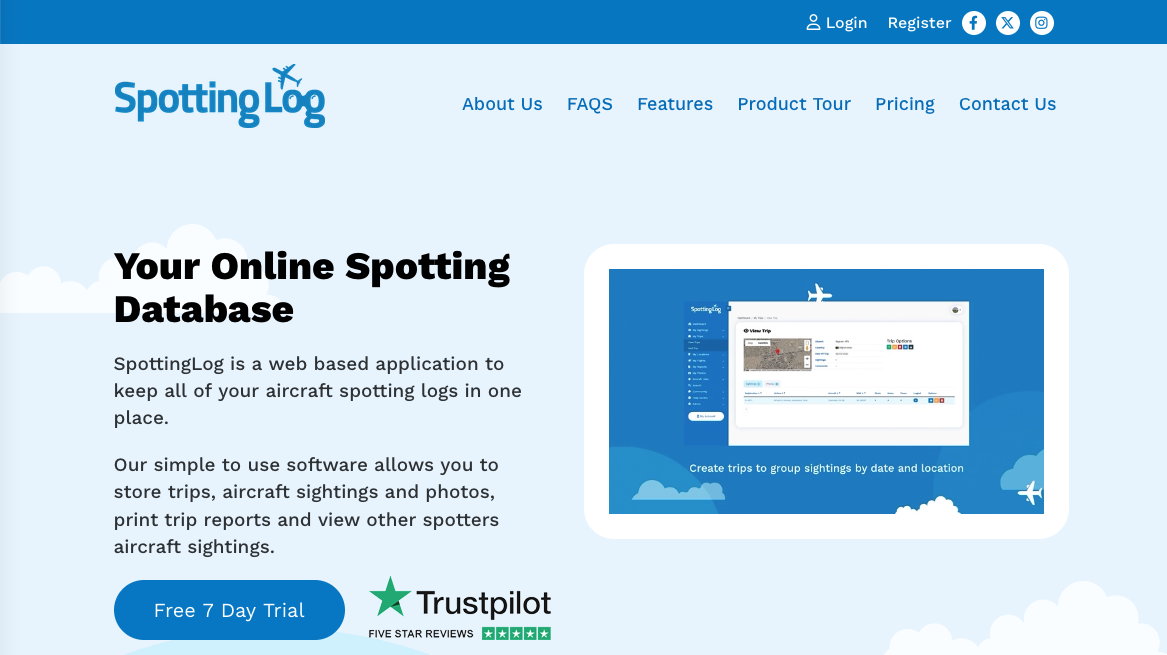 Spotting a new plane is like finding a new baseball card you didn’t have before. You need a place to keep it. Sure, you can throw baseball cards into a desk drawer ;-). Or you can keep them organized in a book or some other way so you can find them quickly.
Spotting a new plane is like finding a new baseball card you didn’t have before. You need a place to keep it. Sure, you can throw baseball cards into a desk drawer ;-). Or you can keep them organized in a book or some other way so you can find them quickly.
SpottingLog.com is a web-based application to keep all your aircraft spotting logs in one place. It’s subscription-based and allows you to store trips, aircraft sightings and photos, print trip reports and view other spotters’ aircraft sightings.
The website also offers fleet and production lists, community forums, enhanced reporting, the ability to import and export to CSV, and free updates.
Other websites: discussion forums
There are several forums and online communities where members talk about plane spotting and can give advice, opinions, etc. These seem to be the most active:
- Reddit – https://www.reddit.com/r/Planespotting/
- Facebook – multiple groups (some more active than others)
Oh, and about photography
There’s a huge contingent of plane spotters who enjoy taking photographs of the planes they see. It’s also a huge fandom group I’m not a part of. However, a quick Google search for PLANE SPOTTING PHOTOGRAPHY (maybe even include the word BEGINNERS) should get you on your way.
We found several people taking photos of planes from the rooftop when we stayed at the H Hotel just outside of LAX for a few hours.
Rules of plane spotting
The last thing plane spotters want is to get in trouble. Besides the personal implications, there are some excellent plane spotting places that airports or city agencies could make inaccessible if they felt plane spotters were unsafe, destructive or potentially a threat.
These rules are adapted from SpottersGuide.net’s Useful Tips page. Honestly, they’re mostly just common sense. But it’s a good idea to keep them in mind:
- Always carry some sort of ID with you. Domestically, a state-issued ID will be fine. But if you’re plane spotting at an international location, have your passport on you. Should authorities stop to ask you questions, they’re going to want proof of who you are.
- If you’re questioned by police or security, be polite. Explain why you’re there, show that it’s just a hobby, and they may let you stay. However if you’re still told to leave a location, leave. No questions asked…just leave.
- Some people go plane spotting in high risk countries where Americans are either not trusted or aren’t safe. Don’t go plane spotting to these locations in groups; you may be seen as a threat to the airport. Try to go with one or more locals to help diffuse any sort of situation with authorities.
- To that end, always bring a picture-rich book or magazine related to aviation when you go plane spotting. It makes it easier to explain your hobby.
- It should go without saying, but never, ever cut holes in fences or destroy anyone’s or anyplace’s property in your attempt to go plane spotting. Especially if the property is part of an airport.
- Clean up after yourself. Do leave drink bottles, food wrappers, etc. behind. You know better.
Feature image (cropped): Tampa Int’l Airport’s 4th annual plane spotting tour
Want to comment on this post? Great! Read this first to help ensure it gets approved.
Want to sponsor a post, write something for Your Mileage May Vary, or put ads on our site? Click here for more info.
Like this post? Please share it! We have plenty more just like it and would love it if you decided to hang around and sign up to get emailed notifications of when we post.
Whether you’ve read our articles before or this is the first time you’re stopping by, we’re really glad you’re here and hope you come back to visit again!
This post first appeared on Your Mileage May Vary
